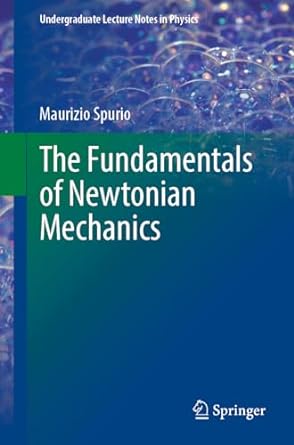Given three vectors (mathbf{a}, mathbf{b}) and (mathbf{c}) show that in intrinsic representation the magnitude: (V=(mathbf{a} times) b)
Question:
Given three vectors \(\mathbf{a}, \mathbf{b}\) and \(\mathbf{c}\) show that in intrinsic representation the magnitude: \(V=(\mathbf{a} \times\) b) - c corresponds to the volume of the parallelepiped defined by the three vectors. Calculate the volume in the case of the vectors \(\mathbf{a}, \mathbf{b}\) defined in the Question 8 , and \(\mathbf{c}=(-2 \hat{\mathbf{i}}+\hat{\mathbf{j}})\).
Question 8
Find the vector \(\mathbf{c}\) which added to the vectors \(\mathbf{a}=(4 \hat{\mathbf{i}}+3 \hat{\mathbf{j}}-2 \hat{\mathbf{k}})\) and \(\mathbf{b}=(2 \hat{\mathbf{i}}-\hat{\mathbf{j}}+\hat{\mathbf{k}})\) gives as a resultant \(\mathbf{r}=(4 \hat{\mathbf{i}}+3 \hat{\mathbf{j}}+1 \hat{\mathbf{k}})\)
Fantastic news! We've Found the answer you've been seeking!
Step by Step Answer:
Related Book For 

Question Posted:





